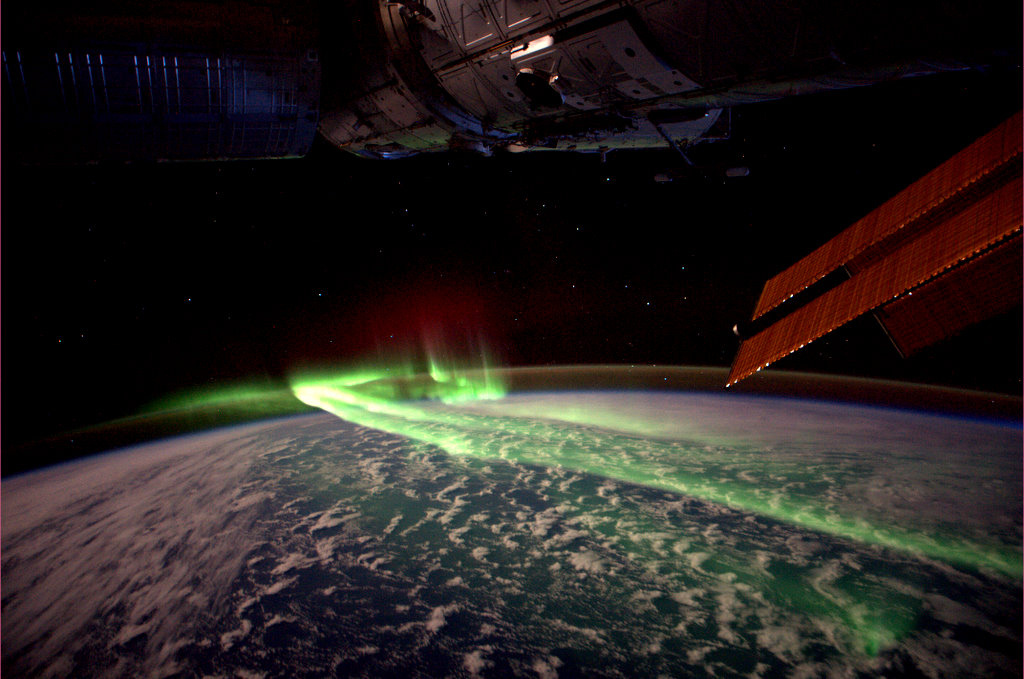The Arctic 'ring of fire' solar eclipse of 2021 changed southern auroras. Here's how.
The June 10, 2021 solar eclipse passed over Canada, Greenland and Russia.

A solar eclipse on one side of Earth stimulated aurora displays on the opposite side of our planet, according to a new study.
The "ring of fire" or annular solar eclipse of June 10, 2021, passed over sparsely-populated regions near and within the Arctic Circle in Canada, Greenland and Russia, and appeared as a partial eclipse in other parts of the world.
A team of scientists was keenly interested in this event. Scientists generally love solar eclipses because their rare and beautiful displays can reveal a lot about different phenomena such as the sun's activity. In a new study published by the American Geophysical Union (AGU), scientists detail a different aspect of an eclipse: how the June 2021 solar eclipse over the Arctic affected auroras occurring near the opposite pole.
Related: Best equipment for aurora photography
"This is unique and interesting research that modeled global impacts of the solar eclipse," Toshi Nishimura, a space physicist at Boston University who was not involved in the research, said in a Jan. 12 AGU statement describing the new work. "Usually, people don't think about the connection between the solar eclipse and aurora because the eclipse is a daytime phenomenon and the aurora is a phenomenon in the night at high latitudes. But an eclipse can sometimes occur at high latitudes and this research demonstrated its impact on aurora."
Even though Earth's poles are located on opposite ends of the planet, they are tethered to each other by the lines of Earth's magnetic field, according to Tony Dang, a study author and a geophysicist at the University of Science and Technology of China in the statement.
The lines form a larger structure surrounding Earth, called the magnetosphere, and this region interacts with an upper part of the planet's atmosphere, the ionosphere. In the ionosphere, charged particles swim about, thinning out when on the night side of Earth and becoming excited when sunlight reaches them, according to NASA.
Get the Space.com Newsletter
Breaking space news, the latest updates on rocket launches, skywatching events and more!
During the June 2021 solar eclipse, the moon blocked a significant amount of sunlight from hitting Earth's ionosphere over the Arctic, reducing the ionosphere's electron density, according to the study.
Earth's poles are unique spots in the magnetosphere because they mark the beginning and end of the planet's magnetic field lines. Their locations are therefore prime real estate for the pooling of charged particles that produce auroras. When enough of these charged particles strike oxygen and nitrogen molecules in the upper atmosphere, an abundance of collisions produces the meandering and mesmerizing light displays of auroras.
Before the June 2021 eclipse, scientists hypothesized that a solar eclipse in the Arctic — near the North Pole — would interfere with the ionospheric particles that interact with the magnetosphere to produce auroras.
After running simulations, the researchers found that Arctic dimming from the solar eclipse changed the electrical currents that flowed toward the Southern Hemisphere and altered aurora activity near the South Pole — even though there was no eclipse there.
"This study demonstrates that the geospace response to a polar-region solar eclipse is not limited just to the eclipse region but has global implications," according to the new paper, published in the AGU journal Geophysical Research Letters.
Follow Doris Elin Urrutia on Twitter @salazar_elin. Follow us on Twitter @Spacedotcom and on Facebook.
Join our Space Forums to keep talking space on the latest missions, night sky and more! And if you have a news tip, correction or comment, let us know at: community@space.com.

Doris is a science journalist and Space.com contributor. She received a B.A. in Sociology and Communications at Fordham University in New York City. Her first work was published in collaboration with London Mining Network, where her love of science writing was born. Her passion for astronomy started as a kid when she helped her sister build a model solar system in the Bronx. She got her first shot at astronomy writing as a Space.com editorial intern and continues to write about all things cosmic for the website. Doris has also written about microscopic plant life for Scientific American’s website and about whale calls for their print magazine. She has also written about ancient humans for Inverse, with stories ranging from how to recreate Pompeii’s cuisine to how to map the Polynesian expansion through genomics. She currently shares her home with two rabbits. Follow her on twitter at @salazar_elin.









